Vital signs General Vital signs Vital sign Temperature



























































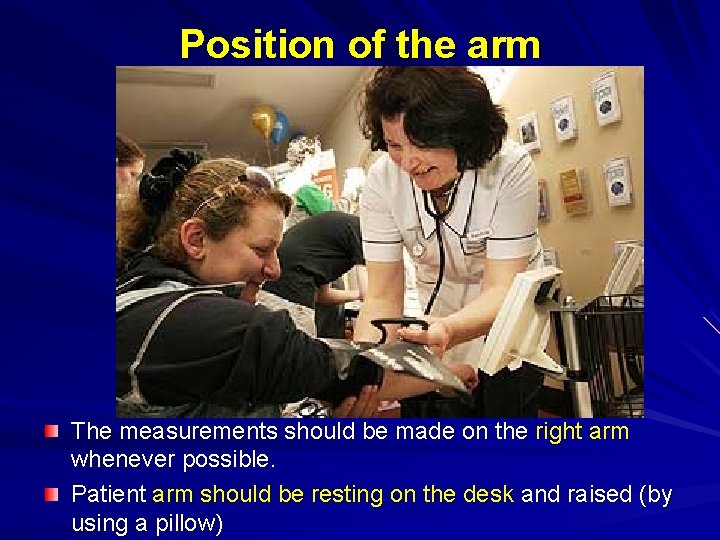
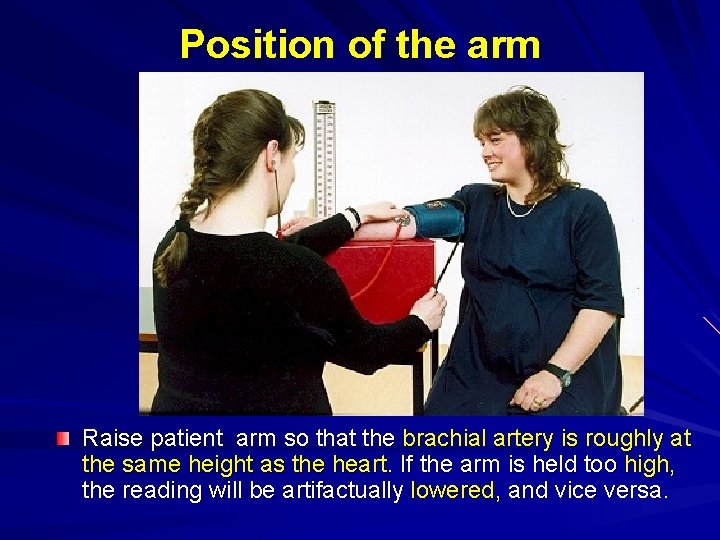








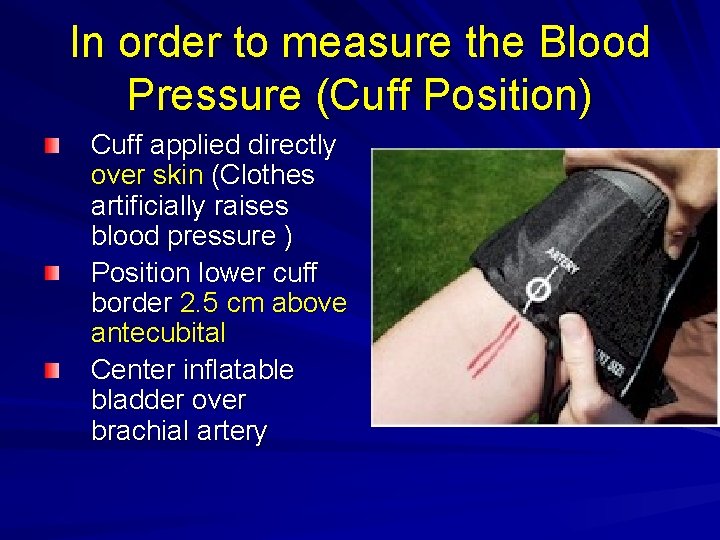


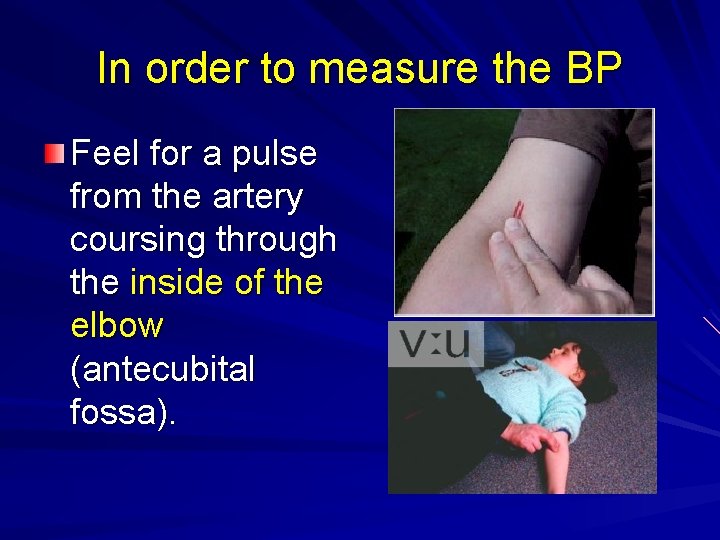


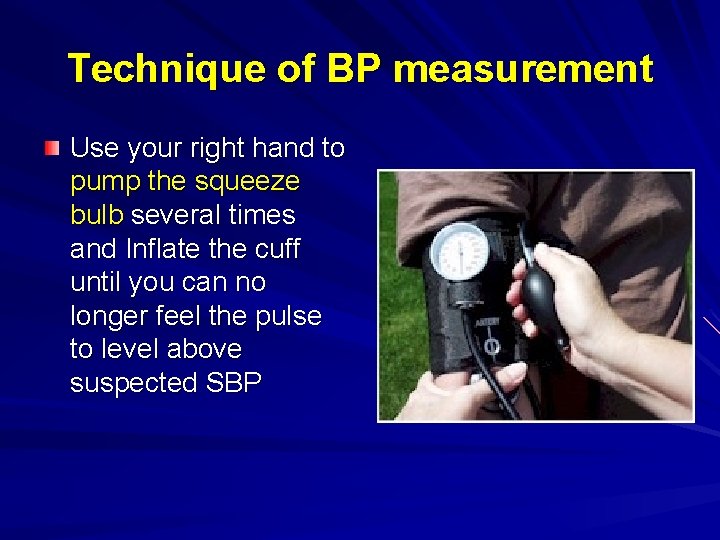
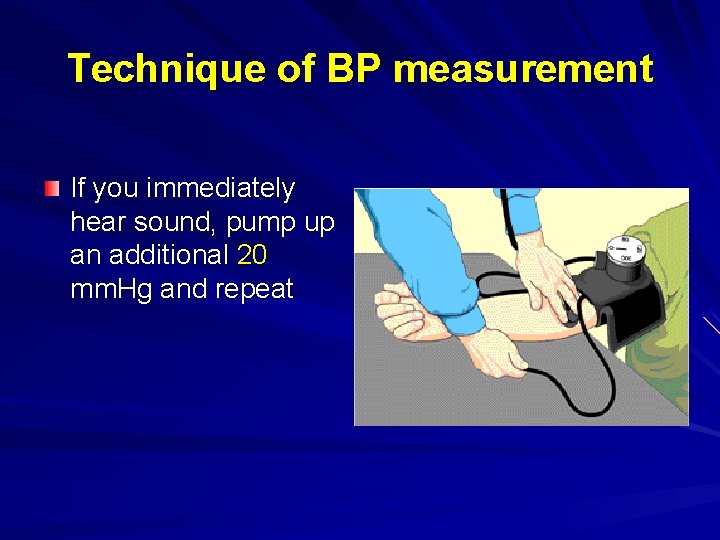
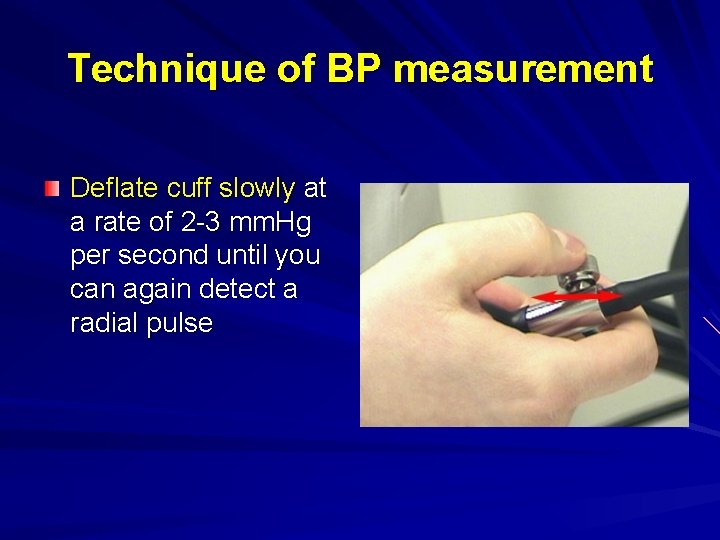
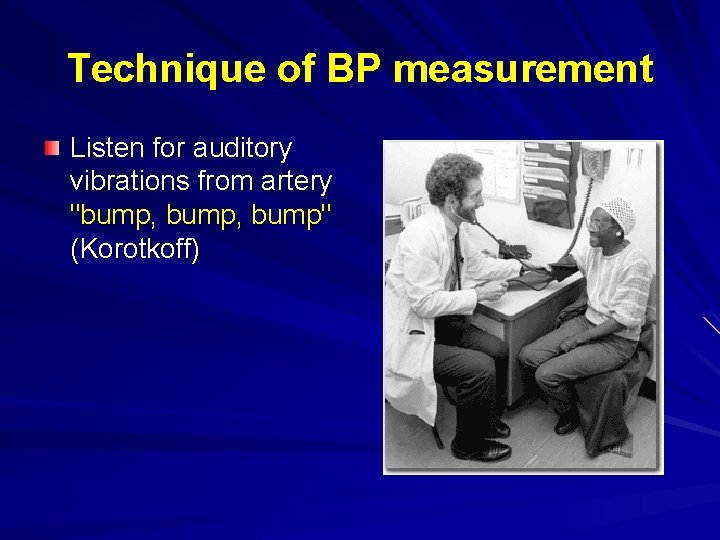


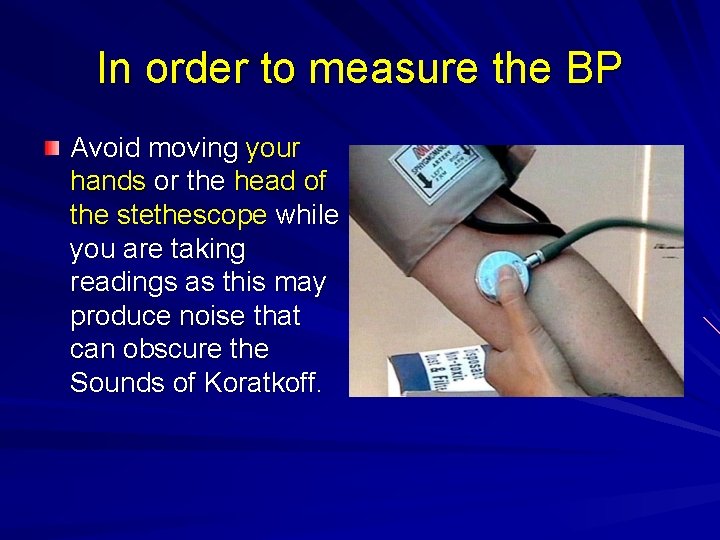

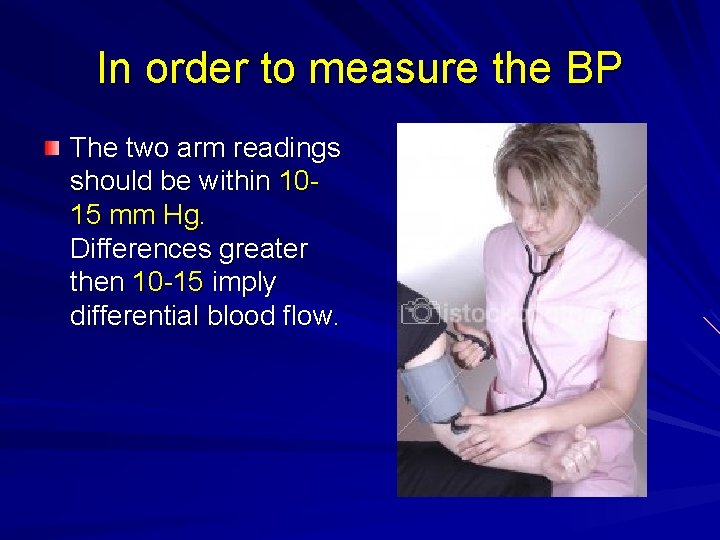
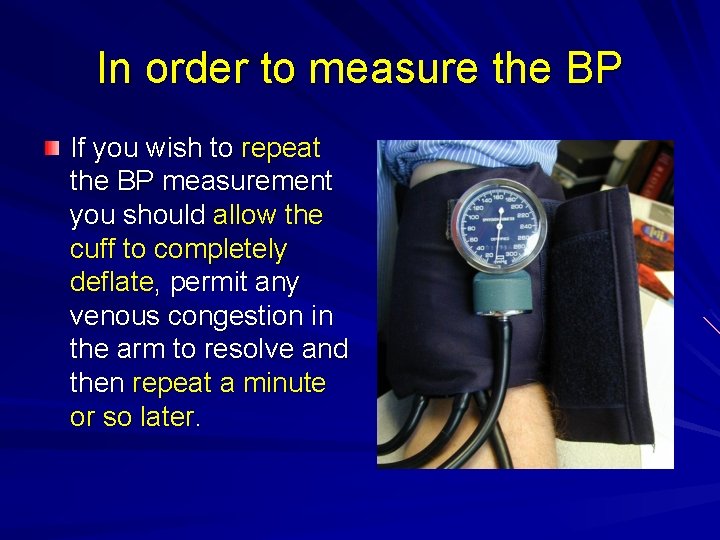
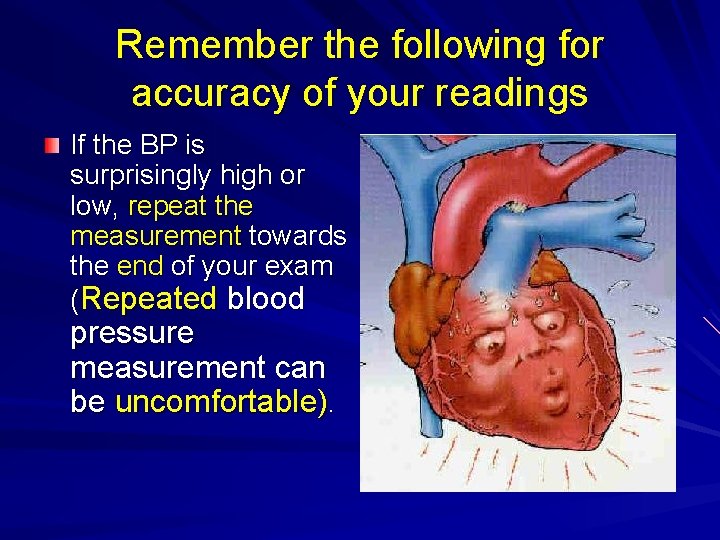



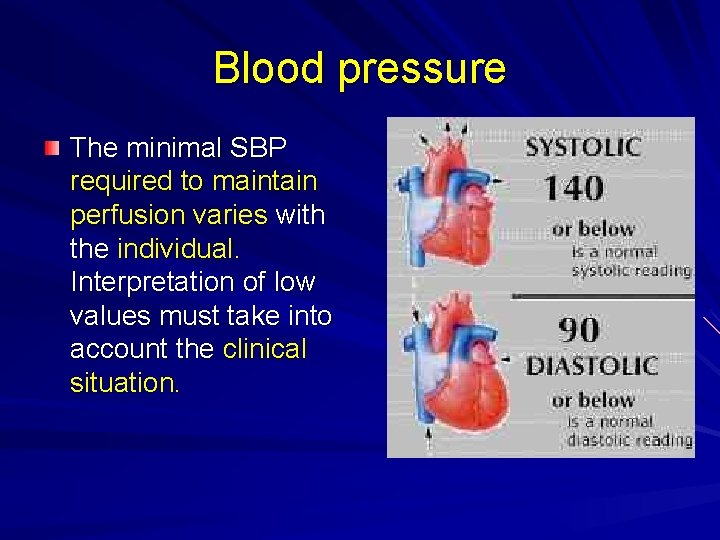

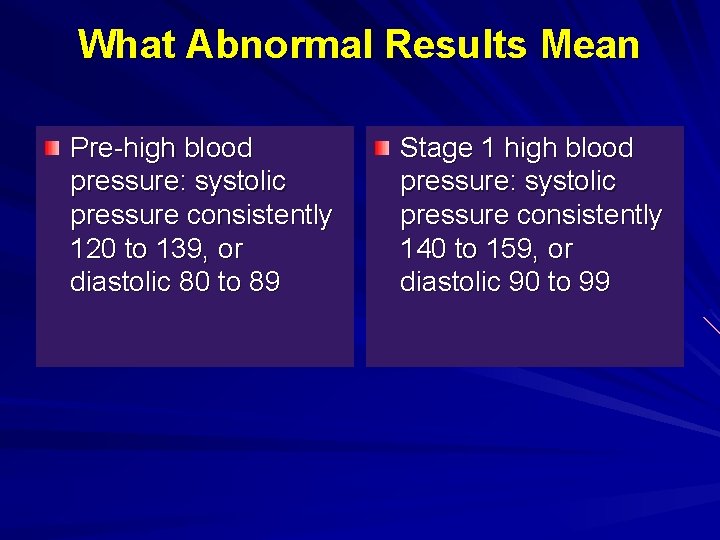
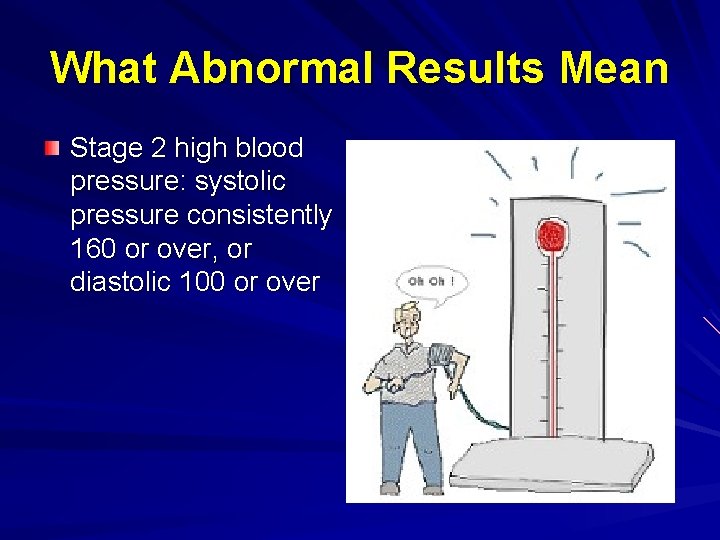
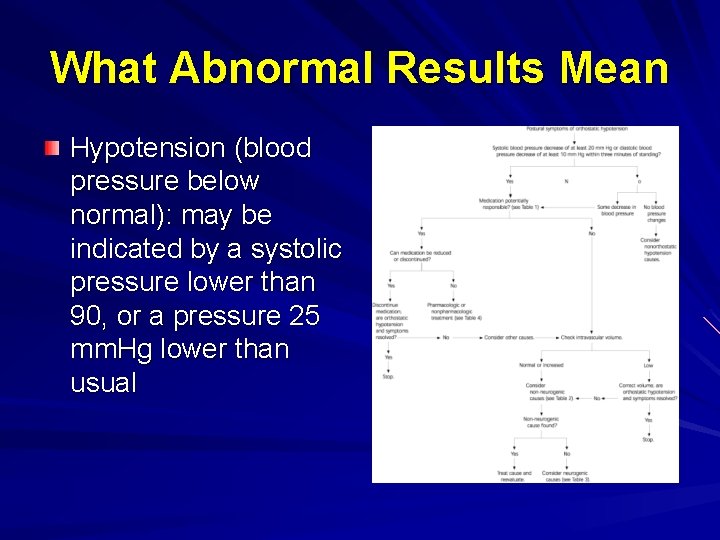
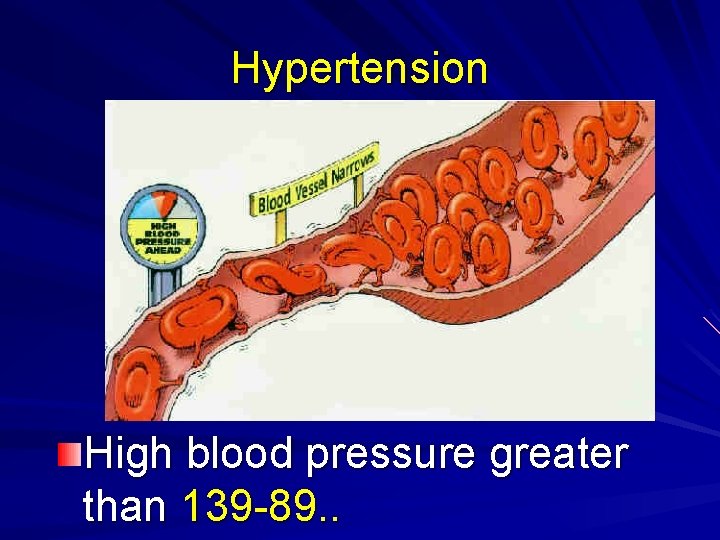
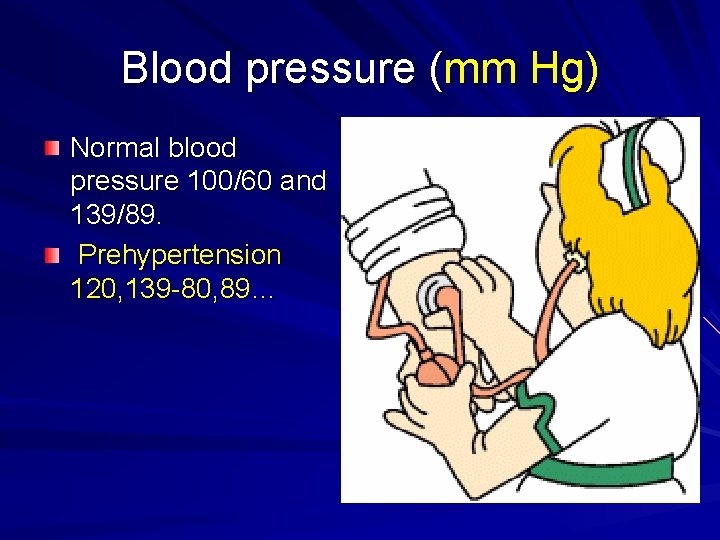
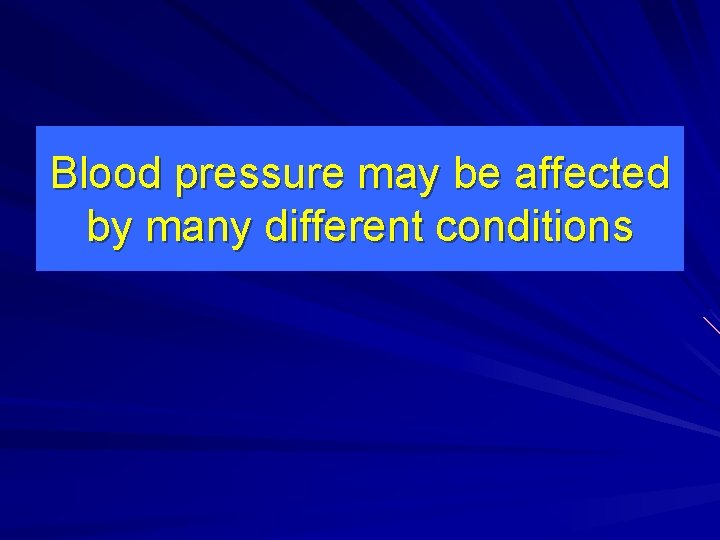

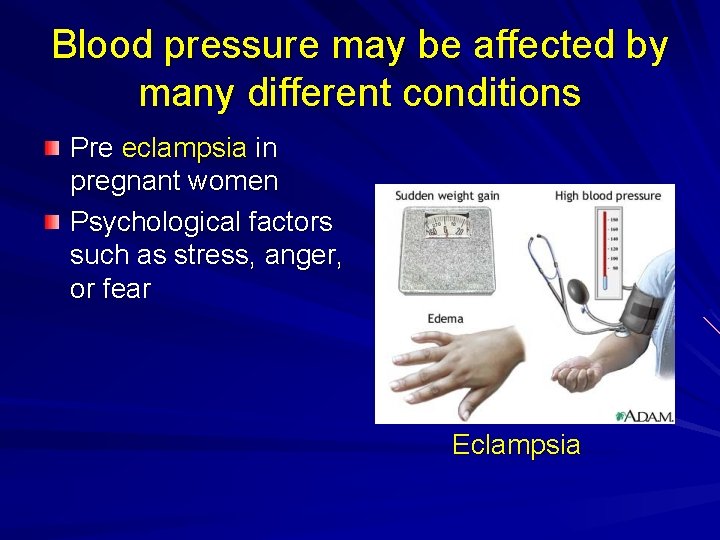


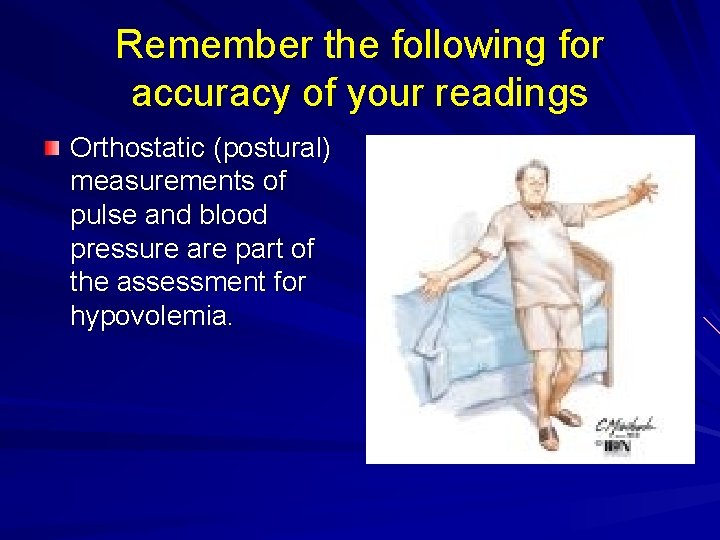
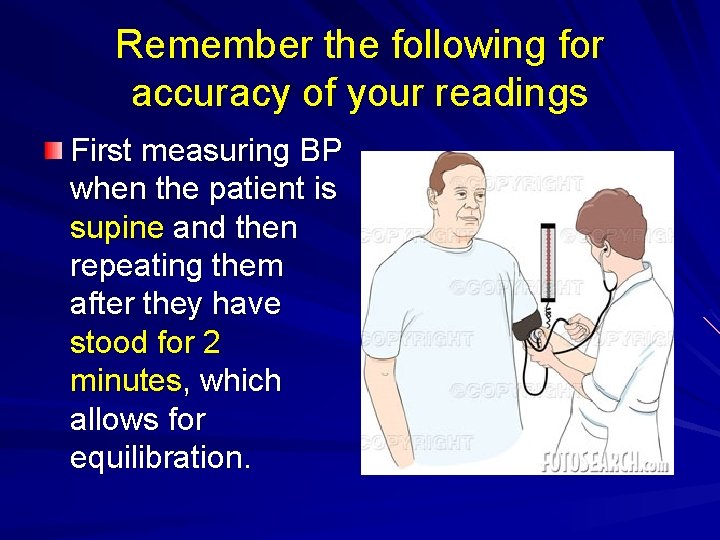
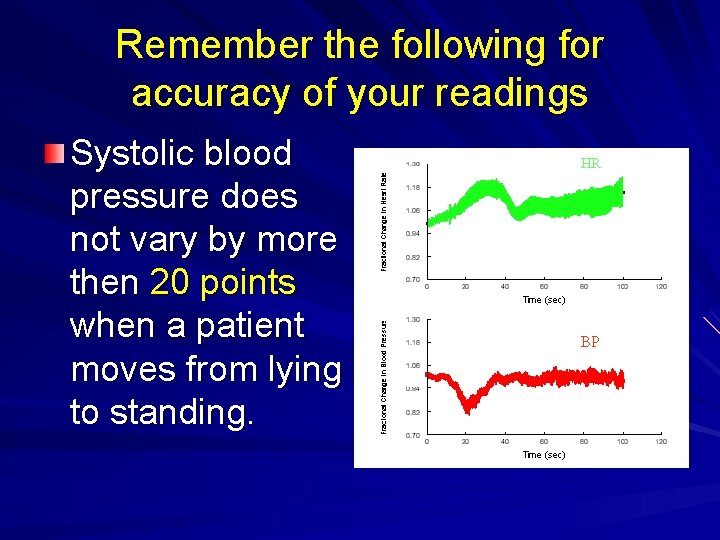
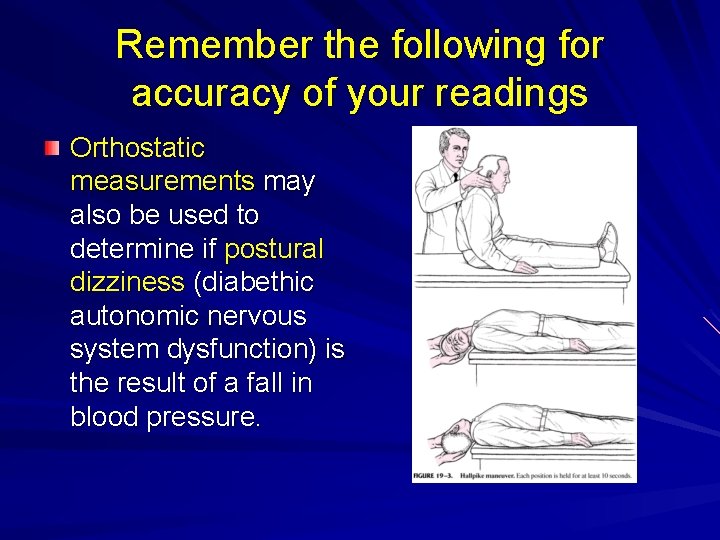
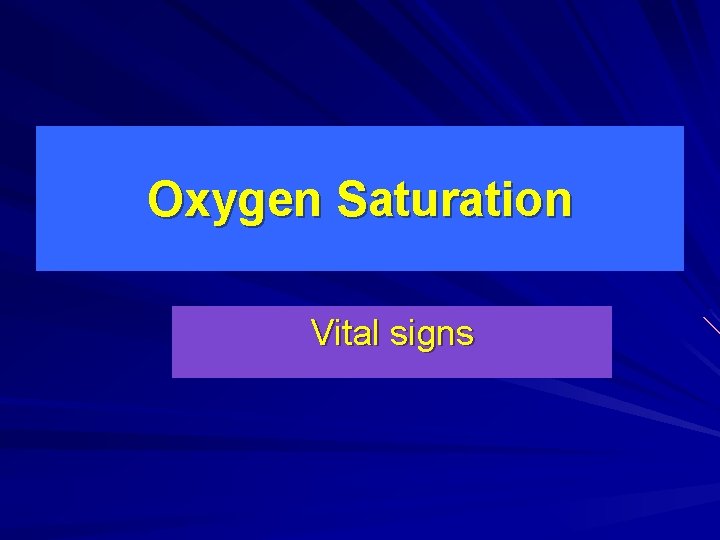

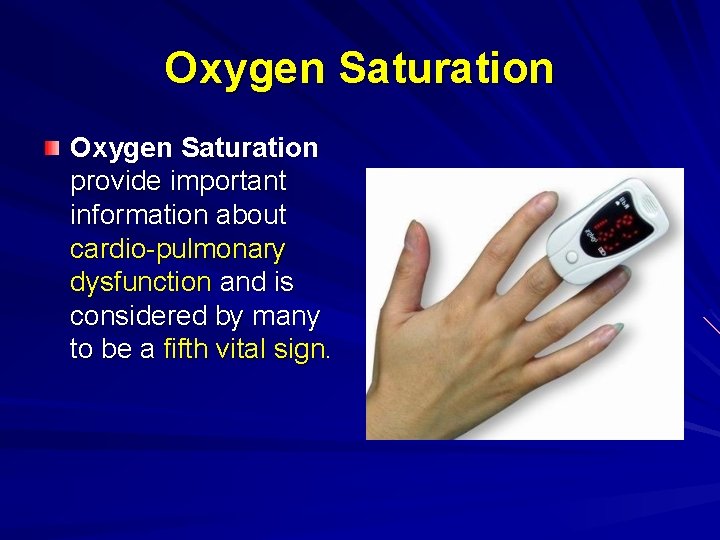
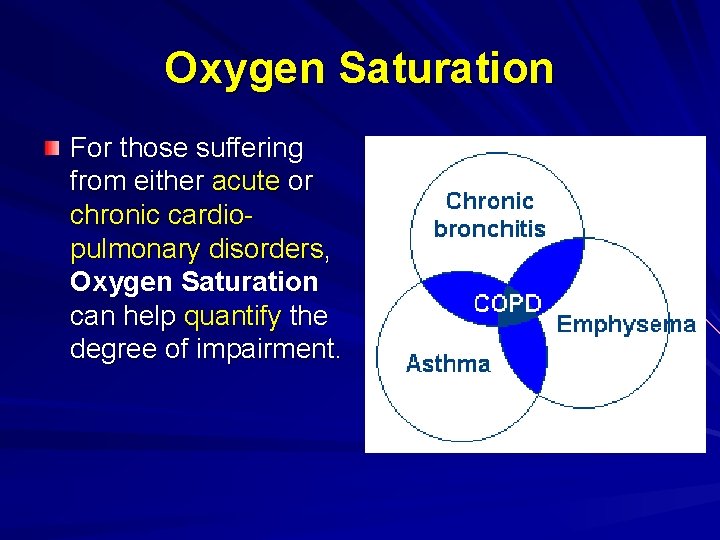

- Slides: 110


Vital signs

General Vital signs

Vital sign Temperature respiratory Pulse Blood pressure orientation Pain oxygen saturation.

Vital sign These signs may be observed, measured, and monitored to assess an individual's level of physical functioning.

Vital sign All measurements are made while the patient is seated.

Vital sign Prior to measuring vital signs, the patient should have had the opportunity to sit for approximately five minutes.

Observation Before diving in, take a minute or so to look at the patient in their entirety.

Observation Does the patient seem anxious, in pain, upset? What about their dress and hygiene? Remember, the exam begins as soon as you lay eyes on the patient.

Temperature Vital signs



Rectal Thermometer



Temperature Old people, people with disabilities, babies and young children typically feel more comfortable at higher temperatures.

Temperature Women notice that they are feeling cool quicker than men, which may be related to their different body size.

Temperature The normal body temperature of a person varies depending on gender, recent activity, food and fluid consumption, time of day, and, in women, the stage of the menstrual cycle.


Temperature is measured in either Celcius or Farenheit

Temperature Rectally temperatures taken rectally (using a mercury or digital thermometer) tend to be 0. 5 to 0. 7° (Fahrenheit) higher than when taken by mouth.

Temperature Oral temperature can be taken by mouth using classic glass mercury-filled or digital thermometers.

Temperature Axillary temperatures can be taken under the arm. Temperatures taken by this route tend to be 0. 3 to 0. 4° (Fahrenheit) lower than those temperatures taken by mouth.

Temperature By ear a special thermometer can quickly measure the temperature of the ear drum, which reflects the body's core temperature.



Hypothermia is defined as a drop in body temperature below 35/9. If drop below 34 death

Respiration rate Vital signs



What is the respiration rate? The respiration rate is the number of breaths a person takes per minute.

Respiratory Rate Try to do this as surreptitiously as possible. Observing the rise and fall of the patient's hospital gown while you appear to be taking their pulse.

Respiratory Rate They should be counted for at least 30 seconds 15 second period is rather small and any miscounting can result in rather large errors when multiplied by 4.

Respiratory Rate Respiration rates may increase with fever, illness, …. When checking respiration, also note whether a person has any difficulty breathing.

Abnormal Respiratory Rate Respiration rates over 25 or under 12 breaths per minute (when at rest) may be considered abnormal under 12 breaths over 25 breaths

Respiratory Rate Normal respiration rates at rest range from 15 to 20 breaths per minute. In the cardiopulmonary illness, it can be a very reliable marker of disease activity. 15 20



Pulse Vital signs

Pulse rate The normal pulse for healthy adults ranges from 60 to 100 beats per minute.

Pulse rate The pulse rate may fluctuate and increase with exercise, illness, injury, and emotions. Girls ages 12 and older and women, in general, tend to have faster heart rates than do boys and men.

Pulse rate Athletes, such as runners, may have heart rates in the 40's and experience no problems.

How to check your pulse You feel the beats by firmly pressing on the arteries, which are located close to the surface of the skin at certain points of the body.

How to check your pulse The pulse can be found on the side of the lower neck, on the inside of the elbow, or at the wrist.

Pulse Place the tips of your index and middle fingers just proximal to the patients wrist on the thumb side, orienting them so that they are both over the length of the vessel.

Pulse Push lightly at first, adding pressure if there is a lot of subcutaneous fat or you are unable to detect a pulse. If you push too hard, you might occlude the vessel and mistake your own pulse for that of the patient.

Pulse: Quantity Measure the rate of the pulse (recorded in beats per minute). Count for 30 seconds and multiply by 2 (or 15 seconds x 4).

Pulse: Quantity If the rate is particularly slow or fast, it is probably best to measure for a full 60 seconds in order to minimize the error.

Pulse: Regularity Is the time between beats constant? . Irregular rhythms, are quite common.

Pulse: Volume Does the pulse volume feel normal? This reflects changes in stroke volume. In hypovolemia, the pulse volume is relatively low

Blood pressure Vital signs

Preparation for measurement

Preparation for measurement Patient should abstain from eating, drinking, smoking and taking drugs that affect the blood pressure one hour before measurement.

Remember the following for accuracy of your readings Instruct your patients to avoid coffee, smoking or any other unprescribed drug with sympathomimetic activity on the day of the measurement

Preparation for measurement Because a full bladder affects the blood pressure it should have been emptied.

Preparation for measurement Painful procedures and exercise should not have occurred within one hour. Patient should have been sitting quietly for about 5 minutes.

Preparation for measurement BP take in quiet room and comfortable temperature, must record room temperature and time of day.

Position of the Patient

Position of the Patient Sitting position Arm and back are supported. Feet should be resting firmly on the floor Feet not dangling.

Position of the arm The measurements should be made on the right arm whenever possible. Patient arm should be resting on the desk and raised (by using a pillow)

Position of the arm Raise patient arm so that the brachial artery is roughly at the same height as the heart. If the arm is held too high, the reading will be artifactually lowered, and vice versa.

Position of the arm Palm is facing up. The arm should remain somewhat bent and completely relaxed

Equipment

In order to measure the Blood Pressure (equipment) Pediatric Cuff size – Minimum Cuff Width: 2/3 length of upper arm – Minimum Cuff length: Bladder nearly encircles arm

In order to measure the Blood Pressure (equipment) Adult Cuff size – Cuff Width: 40% of limb's circumference – Cuff Length: Bladder at 80% of limb's circumference

In order to measure the Blood Pressure (equipment) Adult Cuff size – Indications for large cuff or thigh cuff Upper arm circumference >34 cm – Indications forearm cuff (with radial palpation) Upper arm circumference >50 cm

Blood Pressure If it is too small, the readings will be artificially elevated. The opposite occurs if the cuff is too large. Clinics should have at least 2 cuff sizes available, normal and large.

Cuff Position

In order to measure the Blood Pressure (Cuff Position) Patient's arm slightly flexed at elbow Push the sleeve up, wrap the cuff around the bare arm

In order to measure the Blood Pressure (Cuff Position) Cuff applied directly over skin (Clothes artificially raises blood pressure ) Position lower cuff border 2. 5 cm above antecubital Center inflatable bladder over brachial artery

Measurement of the pulse rate The manometer scale should be at eye level, and the column vertical. The patient should not be able to see the column of the manometer

Technique of BP measurement

In order to measure the BP Feel for a pulse from the artery coursing through the inside of the elbow (antecubital fossa).

In order to measure the BP Wrap the cuff around the patient's upper arm Close thumbscrew.

In order to measure the BP With your left hand place the stethoscope head directly over the artery you found. Press in firmly but not so hard that you block the artery.

Technique of BP measurement Use your right hand to pump the squeeze bulb several times and Inflate the cuff until you can no longer feel the pulse to level above suspected SBP

Technique of BP measurement If you immediately hear sound, pump up an additional 20 mm. Hg and repeat

Technique of BP measurement Deflate cuff slowly at a rate of 2 -3 mm. Hg per second until you can again detect a radial pulse

Technique of BP measurement Listen for auditory vibrations from artery "bump, bump" (Korotkoff)

In order to measure the BP Systolic blood pressure is the pressure at which you can first hear the pulse.

In order to measure the BP Diastolic blood pressure is the last pressure at which you can still hear the pulse

In order to measure the BP Avoid moving your hands or the head of the stethescope while you are taking readings as this may produce noise that can obscure the Sounds of Koratkoff.

Technique of BP measurement BP must take in both arms and one lower extremity.

In order to measure the BP The two arm readings should be within 1015 mm Hg. Differences greater then 10 -15 imply differential blood flow.

In order to measure the BP If you wish to repeat the BP measurement you should allow the cuff to completely deflate, permit any venous congestion in the arm to resolve and then repeat a minute or so later.

Remember the following for accuracy of your readings If the BP is surprisingly high or low, repeat the measurement towards the end of your exam (Repeated blood pressure measurement can be uncomfortable).

In order to measure the BP You can verify the SBP by palpation. Place the index and middle fingers of your right hand over the radial artery.

What Abnormal Results Mean

In order to measure the BP Diastolic blood pressure allow free flow of blood without turbulence and thus no audible sound. These are known as the Sounds of Koratkoff.

Blood pressure The minimal SBP required to maintain perfusion varies with the individual. Interpretation of low values must take into account the clinical situation.

Blood pressure for adult Physician will want to see multiple blood pressure measurements over several days or weeks before making a diagnosis of hypertension and initiating treatment.

What Abnormal Results Mean Pre-high blood pressure: systolic pressure consistently 120 to 139, or diastolic 80 to 89 Stage 1 high blood pressure: systolic pressure consistently 140 to 159, or diastolic 90 to 99

What Abnormal Results Mean Stage 2 high blood pressure: systolic pressure consistently 160 or over, or diastolic 100 or over

What Abnormal Results Mean Hypotension (blood pressure below normal): may be indicated by a systolic pressure lower than 90, or a pressure 25 mm. Hg lower than usual

Hypertension High blood pressure greater than 139 -89. .

Blood pressure (mm Hg) Normal blood pressure 100/60 and 139/89. Prehypertension 120, 139 -80, 89…

Blood pressure may be affected by many different conditions

Blood pressure may be affected by many different conditions Cardiovascular disorders Neurological conditions Kidney and urological disorders

Blood pressure may be affected by many different conditions Pre eclampsia in pregnant women Psychological factors such as stress, anger, or fear Eclampsia

Blood pressure may be affected by many different conditions Various medications "White coat hypertension" may occur if the medical visit itself produces extreme anxiety

Orthostatic Hypotention

Remember the following for accuracy of your readings Orthostatic (postural) measurements of pulse and blood pressure are part of the assessment for hypovolemia.

Remember the following for accuracy of your readings First measuring BP when the patient is supine and then repeating them after they have stood for 2 minutes, which allows for equilibration.

Remember the following for accuracy of your readings Systolic blood pressure does not vary by more then 20 points when a patient moves from lying to standing.

Remember the following for accuracy of your readings Orthostatic measurements may also be used to determine if postural dizziness (diabethic autonomic nervous system dysfunction) is the result of a fall in blood pressure.

Oxygen Saturation Vital signs

Oxygen Saturation Over the past decade, Oxygen Saturation measurement of gas exchange and red blood cell oxygen carrying capacity has become available in all hospitals and many clinics.

Oxygen Saturation provide important information about cardio-pulmonary dysfunction and is considered by many to be a fifth vital sign.

Oxygen Saturation For those suffering from either acute or chronic cardiopulmonary disorders, Oxygen Saturation can help quantify the degree of impairment.

THANK TOU